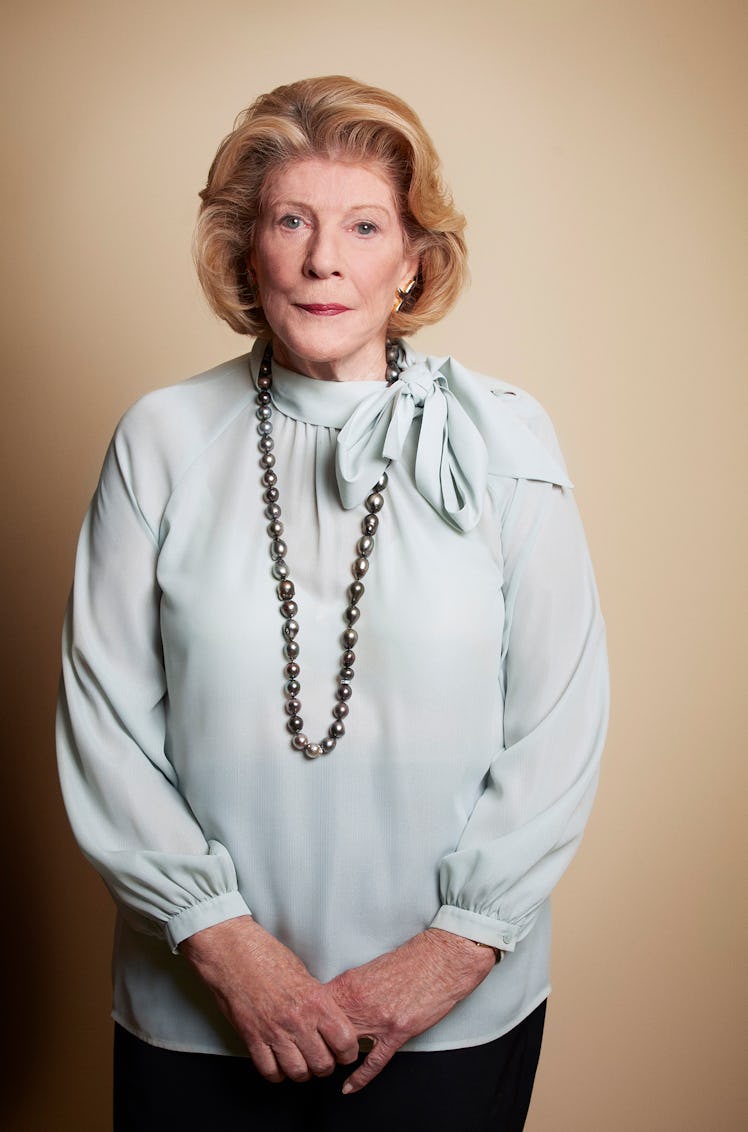Agnes Gund’s Philosophy of Philanthropy

For W’s annual The Originals portfolio, we asked creatives—pioneers in the fields of art, design, fashion, comedy, activism, and more—to share their insights on staying true to themselves. See this year’s full class of creatives here.
For decades, you have been regarded as one of the most impactful philanthropists in the art world. In 2017, you sold a beloved painting in your collection, Roy Lichtenstein’s Masterpiece, and donated $100 million of the proceeds to launch the Art for Justice Fund. Your mission was to end mass incarceration and reform the criminal justice system, which prompted The New York Times to run the headline “Is Agnes Gund the Last Good Rich Person?” What was your reaction?
I really didn’t agree with that statement. There are many people doing good things, and there are many people giving much more than I could even dream of giving. MacKenzie Scott, Jeff Bezos’s former wife, is one of them. She’s terrific. From the beginning, our plan was for Art for Justice to only be five years. But because she gave us a large grant, we had enough money from her, Julie Mehretu, and many others to do a sixth.
What was one of the first major artworks you acquired?
When I started, in the late 1960s, it was unusual for a woman to collect all on her own without a husband. There were always husbands in everything. My collecting began after my husband and I separated. Emily Hall Tremaine, a wonderful friend, mentor, and collector, introduced me to a number of artists, including Mark Rothko. I went to visit him, and when I got the Rothko that I have now, it gave me a boost of confidence that I hadn’t had before I knew I could collect that kind of thing.
What does originality mean to you?
People say that nothing is new and nothing is truly original, especially in terms of the arts, and I really believe that. I’m always seeing things that have references to other artists and earlier artists. I respond, personally, to artists who reference the past. I think that’s one of the reasons I love Jasper Johns’s work so much.
Why did you decide to extend Art for Justice after its initial five-year run?
The movement to end mass incarceration is arguably at its most critical inflection point in decades. The first thing our mayor in New York said when he took office was that he supports punitive segregation. Mayor Adams actively continues to allow the number of people who are currently held in punitive segregation in NYC jails to rise. Art for Justice is disrupting mass incarceration through our support to artists and policy advocates working together to transform our criminal legal system and address its underlying racial bias. We’re fighting the very process and policies that lead to high prison populations in the first place. Since its launch, in 2017, the fund has made over 300,000 grants to individuals and organizations, totaling more than $105 million. Our partners are safely reducing prison populations, which isn’t everybody’s idea of a good thing, but we’re not pardoning murderers.
Who else in the art world do you think is doing really important philanthropic work?
Mark Bradford has done so much. He helps other artists, he’s working on foster care reform, and he gave a series of photographs that raised a million dollars for our program. There’s something in Mark. He works very hard with foster care. And then there’s Titus Kaphar, who has his nonprofit, NXTHVN, in New Haven, Connecticut. And Sarah Arison, who has done a great job with MoMA PS1, her foundation, and the YoungArts awards.
In the past, when asked why you’re a philanthropist, you’ve repeatedly said “guilt.” Is that still the case today?
Well, I still do feel that, but not as badly. I’ve learned that you can use money to help people, or to try to affect something that wouldn’t be affected without the money. And I’m not content to rest. There’s still so much suffering and injustice in the world, and there is always so much more that I wish I could do. One of the things that bothers me right now is how I’m told that I’m spending too much money and there’s not going to be any left to go anywhere. But I think that if I live a few more years, I’ll get it readjusted.
Photography assistant: Roy Beeson.